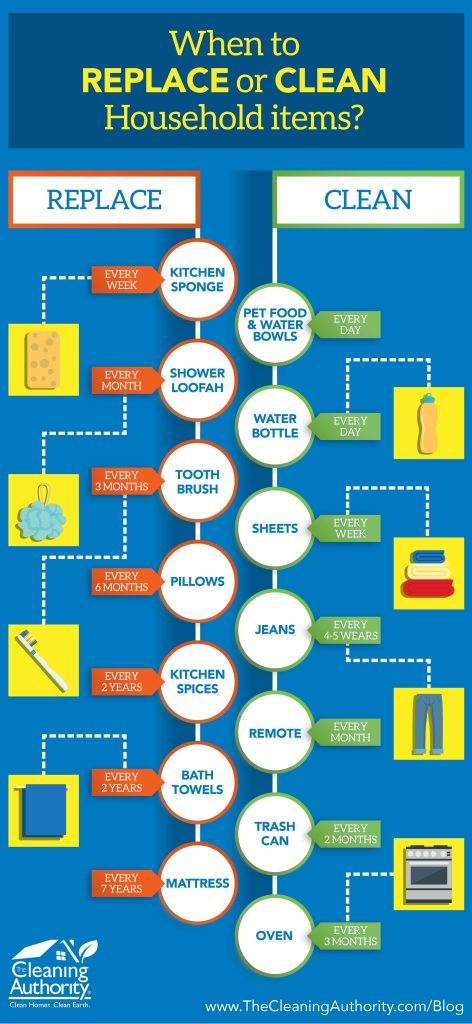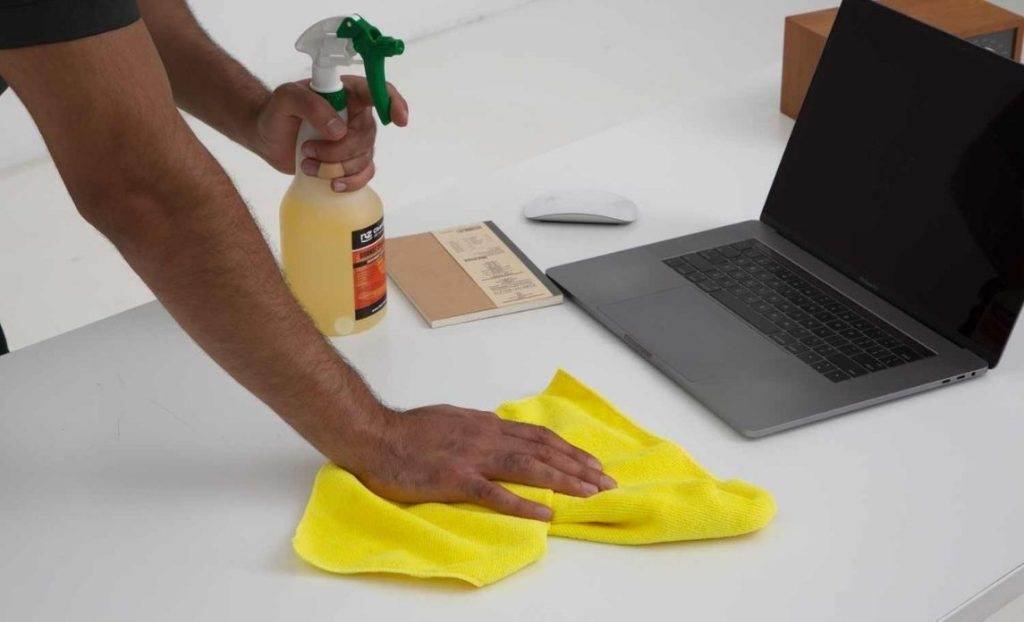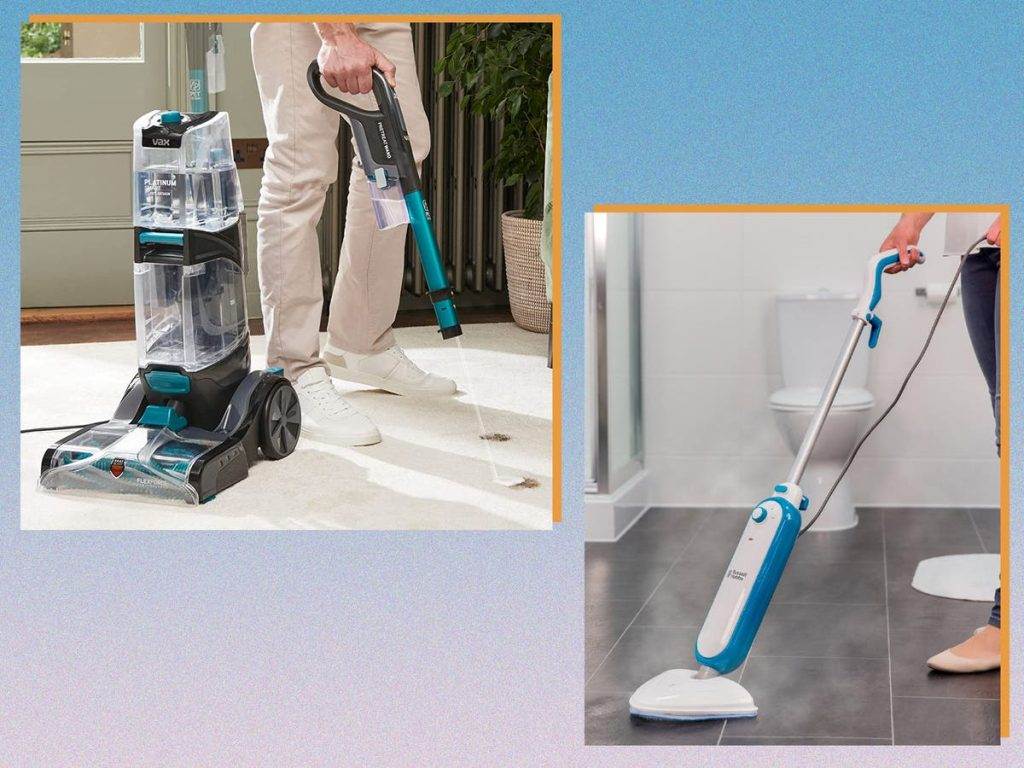29September 2023
In the bustling world of cleaning companies, the lifespan of equipment plays a crucial role in ensuring quality service. But have you ever wondered how often these companies rotate or replace their cleaning equipment? From state-of-the-art vacuum cleaners to scrubbing machines, there is a careful strategy behind maintaining a well-equipped cleaning arsenal. In this article, we will uncover the secrets behind the frequency of equipment rotation and replacement in the cleaning industry, providing you with a fascinating insight into the behind-the-scenes operations that keep our spaces spick and span. So, get ready to discover the hidden world of cleaning company practices and the measures taken to ensure efficient and effective results!

This image is property of www.thecleaningauthority.com.
Factors Affecting Equipment Replacement
Type of Equipment
The type of equipment being used plays a crucial role in determining when it should be replaced. Different cleaning equipment has varying levels of durability and lifespan. For example, vacuum cleaners and floor scrubbers may need to be replaced more frequently due to heavy usage compared to pressure washers or steam cleaners, which are more durable and have longer lifespans.
Frequency of Use
The frequency at which cleaning equipment is used also impacts its replacement schedule. Equipment used multiple times a day will experience more wear and tear than those used only a few times a week. Therefore, cleaning companies need to consider the usage frequency to determine when it is appropriate to rotate or replace their equipment.
Cleaning Environment
The environment in which cleaning equipment is used can significantly affect its lifespan. For instance, if the equipment is frequently exposed to harsh chemicals or abrasive surfaces, it may deteriorate at a faster rate and require more frequent replacement. On the other hand, equipment used in a controlled and clean environment may have a longer lifespan and require less frequent replacement.
Maintenance and Repairs
Regular maintenance and timely repairs are essential in prolonging the lifespan of cleaning equipment. Companies that proactively inspect and address any issues can extend the usable life of their equipment. By adhering to scheduled maintenance plans and promptly repairing any damages, cleaning companies can reduce the need for premature equipment replacement.
Technological Advancements
Technological advancements in the cleaning industry can also influence equipment replacement decisions. Newer models may offer improved efficiency, better performance, or additional features that can enhance cleaning operations. If a cleaning company wants to stay up-to-date with the latest innovations, they may choose to replace their older equipment with newer, more advanced models.
Types of Cleaning Equipment
Vacuum Cleaners
Vacuum cleaners are a staple in almost all cleaning operations. They are used to remove dust, debris, and dirt from various surfaces. Depending on the brand and model, vacuum cleaners can vary in terms of power, suction capacity, and durability. Regular maintenance, such as filter cleaning and bag replacement, can extend the lifespan of vacuum cleaners.
Floor Scrubbers
Floor scrubbers are designed to deep clean and maintain hard floors. These machines use rotating brushes or pads to scrub away dirt and grime. Proper maintenance and cleaning of the brushes or pads, along with routine inspections, can ensure the floor scrubbers perform optimally. Floor scrubbers are generally more durable and have longer lifespans compared to other cleaning equipment.
Carpet Cleaners
Carpet cleaners are specifically designed to remove dirt, stains, and odors from carpets and rugs. They use a combination of water, cleaning solutions, and brushes to deep clean the carpet fibers. Carpet cleaners may require more frequent replacement due to the wear and tear caused by the interaction between the brushes and the carpet.
Pressure Washers
Pressure washers use a high-pressure water stream to clean a variety of surfaces, such as buildings, driveways, and outdoor equipment. They are typically more durable and have longer lifespans due to their robust construction. However, regular maintenance, including pump inspections and nozzle cleaning, is essential to ensure their longevity.
Steam Cleaners
Steam cleaners utilize high-temperature steam to clean and sanitize surfaces without the use of chemicals. They are often used for deep cleaning tasks and can be an effective and eco-friendly alternative to traditional cleaning methods. With proper maintenance and descaling, steam cleaners can have a long lifespan, making them a cost-effective choice for cleaning companies.

This image is property of crewcare.co.nz.
Regular Maintenance and Repairs
Cleaning Equipment Inspections
Regular inspections of cleaning equipment are crucial to identify any potential issues or signs of wear and tear. By conducting visual inspections and functional tests, cleaning companies can address problems early on and prevent them from escalating into major repairs or the need for equipment replacement.
Scheduled Maintenance
Following a scheduled maintenance plan is essential to ensure the optimal performance and longevity of cleaning equipment. This includes tasks such as lubrication, filter replacement, belt tightening, and battery maintenance. By adhering to a routine maintenance schedule, cleaning companies can minimize the need for unscheduled repairs or equipment replacement.
Minor Repairs
Addressing minor repairs promptly can help extend the lifespan of cleaning equipment. Cleaning companies should have a system in place to handle minor repairs in-house or have a reliable third-party service provider that can quickly and efficiently address any issues. Small repairs, such as hose replacements or switch repairs, can significantly impact the lifespan of the equipment.
Frequency of Rotation or Replacement
Industry Standards and Guidelines
Industry standards and guidelines can provide valuable insight into when cleaning equipment should be rotated or replaced. These recommendations take into account factors such as usage frequency, industry-specific requirements, and equipment lifespan expectations. Following industry standards can help ensure that cleaning companies replace their equipment at appropriate intervals, optimizing their cleaning operations.
Manufacturer Recommendations
Manufacturers of cleaning equipment often provide recommendations for equipment rotation or replacement. These recommendations are based on extensive research, testing, and analysis of the equipment’s performance and expected lifespan. Cleaning companies should consider these recommendations and factor them into their decision-making process regarding equipment rotation or replacement.
Age and Condition of Equipment
The age and condition of cleaning equipment are important factors when determining its replacement schedule. Equipment that has exceeded its expected lifespan or shows significant signs of wear and tear may be more prone to breakdowns or reduced performance. Cleaning companies should evaluate the age and condition of their equipment regularly to identify when replacement is necessary.
Performance and Efficiency
Changes in performance and efficiency can indicate the need for equipment rotation or replacement. If a piece of equipment is no longer operating at its optimal level or if newer models offer significantly improved performance, it may be worth considering replacement. Cleaning companies should closely monitor the performance and efficiency of their equipment to make informed decisions regarding rotation or replacement timelines.

This image is property of clfloorcare.co.uk.
Factors Influencing Equipment Rotation
Overuse and Wear
Overuse and excessive wear can significantly impact the lifespan of cleaning equipment. Cleaning companies that subject their equipment to heavy usage or operate in demanding environments may experience accelerated wear and tear, leading to the need for more frequent equipment rotation or replacement. Proper usage guidelines and regular inspections can help mitigate the effects of overuse and wear.
Damage or Breakdowns
Equipment that incurs significant damage or experiences frequent breakdowns may no longer be cost-effective to repair. If repairs exceed the value or expected lifespan of the equipment, it may be more practical to consider rotating or replacing the damaged equipment. Cleaning companies should assess the extent and frequency of damage or breakdowns to make well-informed decisions.
Technological Obsolescence
Advancements in technology can render older cleaning equipment obsolete. Newer models may offer improved efficiency, advanced features, or enhanced safety measures that older equipment may lack. Cleaning companies that want to maintain a competitive edge and provide the best cleaning services may opt to replace outdated equipment with newer, more technologically advanced models.
Cleaning Company Expansion
As cleaning companies expand their operations, the need for additional equipment arises. Whether it’s to accommodate a larger client base or to diversify their services, expansion often requires the purchase of additional equipment. When expanding, cleaning companies should carefully consider the age and condition of existing equipment and evaluate whether rotating or replacing certain pieces would be beneficial for the overall efficiency and effectiveness of their operations.
Industry Standards and Guidelines
Recommended Replacement Intervals
Industry standards and guidelines provide insight into recommended replacement intervals for various types of cleaning equipment. These recommendations take into account factors such as usage frequency, maintenance practices, and equipment lifespan expectations. By following these guidelines, cleaning companies can ensure that their equipment is replaced at appropriate intervals, maximizing efficiency and minimizing downtime.
Equipment Lifespan Expectations
Industry standards and guidelines also outline the expected lifespan of different cleaning equipment. These expectations are based on extensive research, performance data, and historical trends. Cleaning companies should consider these lifespan expectations when determining the appropriate time for equipment rotation or replacement. By adhering to industry life expectancy estimates, companies can avoid premature replacement or excessive reliance on aging equipment.
Best Practices for Equipment Rotation
Industry standards and guidelines often provide best practices for equipment rotation and replacement. These practices take into account various factors, such as equipment usage, maintenance, and performance. Cleaning companies can benefit from adopting these best practices, which can help optimize their operations, ensure equipment reliability, and minimize unnecessary downtime.

This image is property of static.independent.co.uk.
Manufacturer Recommendations
Scheduled Maintenance Plans
Many manufacturers offer scheduled maintenance plans for their cleaning equipment. These plans provide a comprehensive schedule for routine maintenance, inspections, and necessary repairs. Cleaning companies that follow these manufacturer-recommended maintenance plans can prolong the lifespan of their equipment and minimize the chances of unexpected breakdowns or premature replacement.
Warranty Specifications
Manufacturer warranties often include specifications regarding maintenance and repairs. To ensure warranty coverage remains valid, cleaning companies must adhere to these specifications. Manufacturers may require regular maintenance, the use of authorized parts and service providers, and adherence to specific usage guidelines. By following warranty specifications, cleaning companies can have peace of mind knowing their equipment is protected while also maximizing its lifespan.
Equipment Upgrade Options
Manufacturers frequently release upgraded versions of their cleaning equipment, incorporating new technologies and features to improve performance and efficiency. When considering equipment rotation or replacement, cleaning companies should explore the upgrade options offered by manufacturers. Upgrading equipment may provide significant benefits, such as increased productivity, reduced operating costs, or improved cleaning efficacy.
Budgetary Considerations
Capital Expenditure
The cost of acquiring new equipment is an important consideration for cleaning companies. Equipment rotation or replacement involves capital expenditure, which must be factored into the company’s budget. By properly budgeting for equipment rotation, cleaning companies can ensure they have the necessary funds to replace aging or damaged equipment without compromising their financial stability.
Operating Costs
In addition to acquisition costs, cleaning companies must also consider the operating costs associated with equipment rotation or replacement. Newer models may be more energy-efficient or require fewer consumables, resulting in cost savings over time. Cleaning companies should evaluate the potential operating cost benefits of replacing equipment, including factors such as energy consumption, maintenance requirements, and the availability of cost-effective replacement parts.
Return on Investment
Determining the return on investment (ROI) is crucial when making equipment rotation or replacement decisions. Cleaning companies should consider factors such as increased efficiency, improved cleaning results, reduced operating costs, and the potential for new business opportunities when evaluating the ROI of replacing equipment. By carefully assessing the potential benefits and returns, cleaning companies can make informed decisions that align with their long-term business goals.

This image is property of www.royturk.com.
Minimizing Downtime during Replacement
Backup Equipment
To minimize downtime during equipment replacement, cleaning companies can invest in backup equipment. Having spare equipment allows for seamless transitions when rotating or replacing primary equipment. By having backup equipment readily available, cleaning companies can continue their operations without interruptions or delays.
Scheduled Maintenance Windows
Aligning equipment rotation or replacement with scheduled maintenance windows can help minimize downtime. By strategically planning for equipment replacement during already scheduled maintenance periods, cleaning companies can ensure that replacement processes are completed efficiently. This approach maximizes productivity and reduces the impact on daily cleaning operations.
Efficient Replacement Processes
Efficient replacement processes are essential in minimizing downtime. Cleaning companies should establish clear protocols and schedules for equipment rotation or replacement. This includes coordinating with technicians or service providers, ensuring the availability of replacement equipment or parts, and communicating the replacement timeline to all relevant staff. By streamlining the replacement process, cleaning companies can reduce disruptions and quickly resume normal cleaning operations.
Emerging Trends in Equipment Replacement
Automation and Robotics
Automation and robotics are revolutionizing the cleaning industry. Cleaning companies are increasingly exploring the use of autonomous floor scrubbers, robotic vacuum cleaners, and automated pressure washing systems. These technologies offer improved efficiency, higher precision, and reduced labor costs. As automation and robotics continue to evolve, cleaning companies may consider replacing traditional equipment with these advanced solutions for enhanced productivity and cost-effectiveness.
Predictive Maintenance
Predictive maintenance utilizes data and analytics to predict when equipment may fail or require maintenance. By analyzing various performance indicators, such as energy consumption, temperature, and vibration, cleaning companies can proactively address potential issues before they lead to breakdowns or equipment failures. Implementing predictive maintenance strategies can help optimize equipment lifespan and reduce the need for premature replacements.
Sustainable Cleaning Solutions
The increasing emphasis on sustainability and environmental responsibility has prompted cleaning companies to consider replacing conventional equipment with more eco-friendly alternatives. Sustainable cleaning solutions, such as battery-powered equipment or chemical-free cleaning methods, are gaining popularity. These solutions not only reduce the company’s ecological footprint but also provide cost savings and improved indoor air quality. Cleaning companies that prioritize sustainability may choose to replace older equipment with greener options when considering equipment rotation or replacement.
In conclusion, several factors influence the timing of equipment rotation or replacement for cleaning companies. Factors such as the type of equipment, frequency of use, cleaning environment, maintenance practices, and technological advancements all play a role in determining when equipment should be replaced. Following industry standards, manufacturer recommendations, and best practices can help guide cleaning companies in making informed decisions about equipment rotation. Considering budgetary considerations, minimizing downtime, and staying informed about emerging trends can further enhance the efficiency and effectiveness of equipment replacement processes for cleaning companies.
